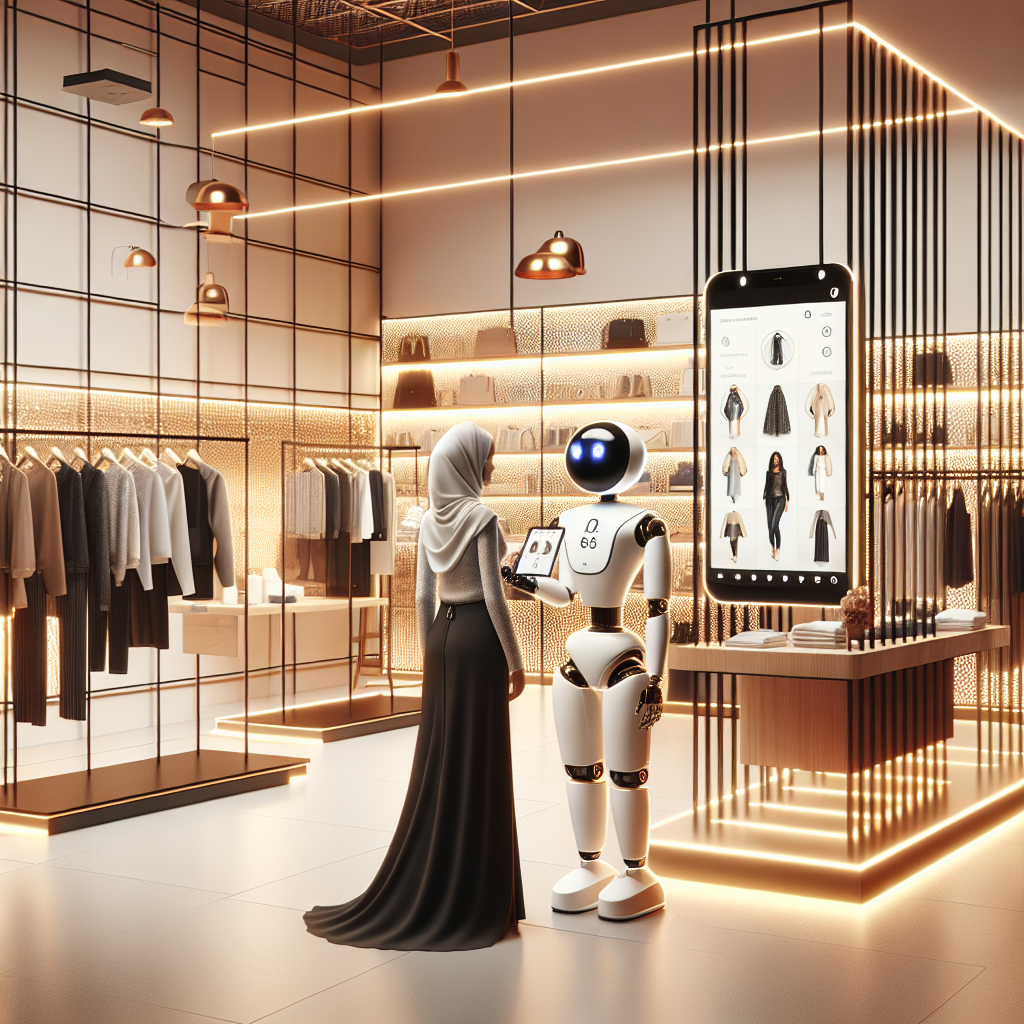Artificial Intelligence (AI) is revolutionizing the retail industry, especially in the fashion sector. From personalized shopping experiences to optimized inventory management, AI is reshaping the way fashion brands and retailers interact with their customers and operate their businesses. In this article, we will explore the various ways in which AI is transforming the retail landscape in fashion and discuss the potential benefits and challenges of this technological advancement.
Personalized Shopping Experiences
One of the key ways in which AI is changing the retail landscape in fashion is through the creation of personalized shopping experiences. AI-powered algorithms analyze customer data, such as browsing history, purchase behavior, and social media interactions, to provide tailored product recommendations and personalized styling advice. This not only enhances the customer experience but also increases sales and customer loyalty.
For example, online fashion retailer Stitch Fix uses AI algorithms to curate personalized clothing recommendations for its customers based on their style preferences, body measurements, and budget. This data-driven approach has helped Stitch Fix increase customer engagement and retention, as well as improve customer satisfaction.
Optimized Inventory Management
AI is also revolutionizing inventory management in the fashion industry. By analyzing historical sales data, market trends, and weather patterns, AI algorithms can predict demand for specific products and optimize inventory levels accordingly. This helps fashion brands and retailers reduce stockouts, minimize overstocking, and improve overall inventory turnover.
Furthermore, AI-powered tools can also help retailers identify slow-moving products, analyze pricing strategies, and optimize product assortment to maximize profitability. This data-driven approach to inventory management not only improves operational efficiency but also enhances the overall customer experience by ensuring that popular products are always in stock.
Enhanced Customer Service
AI is also transforming customer service in the fashion industry. Chatbots powered by AI algorithms can provide instant responses to customer inquiries, offer product recommendations, and assist with order tracking and returns. This not only improves the efficiency of customer service operations but also enhances the overall customer experience by providing timely and personalized support.
For example, luxury fashion brand Burberry uses AI-powered chatbots to engage with customers on social media platforms and provide personalized styling advice. This interactive and personalized approach to customer service has helped Burberry increase customer engagement and drive sales.
Virtual Try-On and Augmented Reality
AI-powered virtual try-on and augmented reality technologies are also reshaping the retail landscape in fashion. These tools allow customers to visualize how clothing and accessories will look on them before making a purchase, thereby reducing the need for physical store visits and improving the online shopping experience.
For example, online eyewear retailer Warby Parker uses AI-powered virtual try-on technology to allow customers to try on glasses virtually using their smartphone camera. This interactive and immersive shopping experience has helped Warby Parker increase conversion rates and reduce returns.
Challenges and Considerations
While AI offers numerous benefits for fashion brands and retailers, there are also challenges and considerations that need to be addressed. One of the key challenges is data privacy and security, as AI algorithms rely on large amounts of customer data to provide personalized recommendations and services. Fashion brands and retailers need to ensure that they are compliant with data protection regulations and that customer data is stored securely.
Another challenge is the potential bias in AI algorithms, as they can reflect and perpetuate existing societal biases. Fashion brands and retailers need to ensure that their AI algorithms are trained on diverse and representative data sets to avoid reinforcing stereotypes and discrimination.
Furthermore, there is a concern about job displacement due to automation in the retail industry. While AI can improve operational efficiency and reduce costs, it can also lead to job losses for retail workers. Fashion brands and retailers need to consider the impact of AI on their workforce and invest in reskilling and upskilling programs to ensure that employees are equipped to work alongside AI technologies.
FAQs
Q: How is AI used in fashion retail?
A: AI is used in fashion retail for personalized shopping experiences, optimized inventory management, enhanced customer service, virtual try-on, and augmented reality.
Q: What are the benefits of AI in fashion retail?
A: The benefits of AI in fashion retail include improved customer experience, increased sales and customer loyalty, optimized inventory management, enhanced customer service, and immersive shopping experiences.
Q: What are the challenges of AI in fashion retail?
A: The challenges of AI in fashion retail include data privacy and security, bias in AI algorithms, and job displacement due to automation.
Q: How can fashion brands and retailers address the challenges of AI?
A: Fashion brands and retailers can address the challenges of AI by ensuring data privacy and security, training AI algorithms on diverse and representative data sets, and investing in reskilling and upskilling programs for employees.
In conclusion, AI is reshaping the retail landscape in fashion by providing personalized shopping experiences, optimizing inventory management, enhancing customer service, and enabling virtual try-on and augmented reality experiences. While AI offers numerous benefits for fashion brands and retailers, there are also challenges and considerations that need to be addressed. By leveraging AI technologies responsibly and ethically, fashion brands and retailers can unlock the full potential of AI to drive innovation and growth in the industry.

